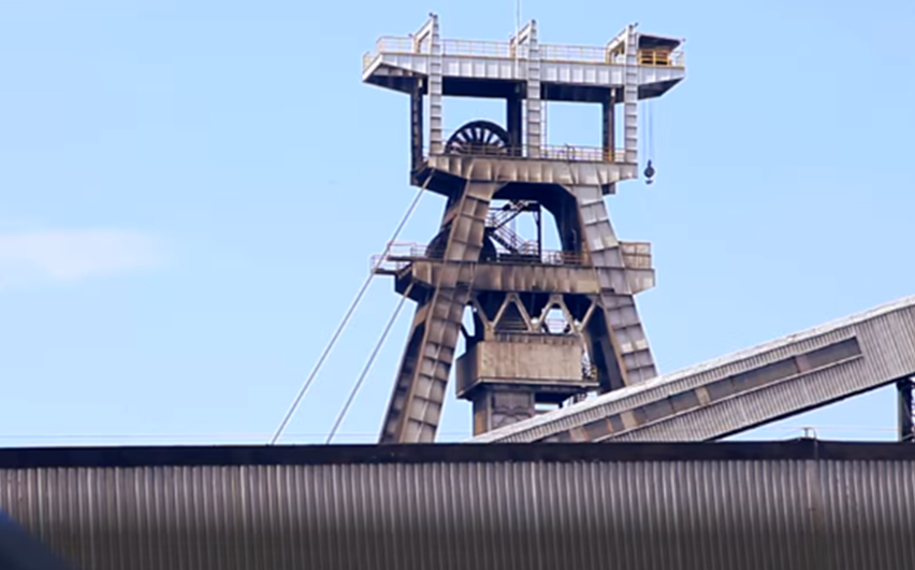Forever known as the birthplace of the Solidarity movement that helped topple communism in eastern Europe, the former Lenin Shipyard is aiming to be at the forefront of a revolution in Poland again. This time the goal is to reduce Russian influence on energy supplies and help the home of Europe’s biggest coal-fired power plant get greener after years of reluctance.
As ever, it comes down to economics. The country’s addiction to coal has led to an increased dependency on imports from its eastern neighbor just as prices are rising while wind power is getting cheaper. It’s forced Poland’s government to shift its energy policy toward European Union renewable energy targets and away from the polluting coal-fired electricity generation.
Poland has about $30 billion of planned wind projects 30 kilometers (19 miles) out in the Baltic. With European shipbuilding sunk by Asian rivals, the government in Warsaw recently took over the Gdansk shipyard and the reinvented company will join Vestas Wind Systems A/S of Denmark, Germany’s Siemens AG and France’s Alstom SA in building Europe’s offshore capacity.
“We have to change and be really responsive to mega-trends and also to keep power prices on reasonable levels,” said Joanna Mackowiak-Pandera, the head of Warsaw-based Forum Energii, which consults with companies and authorities on the wind industry. “What we see now in the power sector is that finally we have to meet some targets.”
For Poland, the turn to offshore wind carries political risk. The nationalist government came to power in 2015 with key support from the influential coal industry after it vowed to keep mines and coal-fired plants as the linchpins of the country’s energy future.
It halted spending—Poland’s wind industry got only $197,000 of investment last year—even though the country had become the biggest wind power player in the region, generating almost double second-place Romania. Coal represented 78 percent of total power generation, albeit down from 84 percent in 2016.
The strategy bucked the trend of Europe-wide efforts to ultimately eradicate dirty fuels, the continent’s wind-power industry reaching record capacities in Germany, the U.K., France and Ireland. It was another source of conflict with the EU as the governing Law & Justice party clashed with its allies over its control of the courts, media and other democratic institutions.
But soaring coal prices, rising imports and falling costs for wind technology have nudged the government in a new direction. With domestic mines being depleted, Poland last year imported about 20 percent of its coal used for power generation, mostly from Russia.
Prime Minister Mateusz Morawiecki appears to be a keen advocate of wind power. He said in December that Russia was using a “divide and conquer” strategy by making Poland pay more for gas than richer Germany. The country will also host the United Nations climate talks, known as COP24, at the end of the year.
“Poland has characterized its reliance on coal as a necessity in order to ensure energy independence,” said Katherine Poseidon, an analyst at Bloomberg New Energy Finance.“But since domestic coal production is on a long-term downward trajectory, the resulting increasing reliance on imported coal negates the energy independence argument, really.”
Even with the political will, building offshore wind capacity is no easy task. Scotland aims to become Europe’s wind energy hub, though legal battles, geographical challenges and caps on government aid meant projects have been delayed.
Then there’s the sheer cost and the bureaucracy.
Poland has plans to build up to 8 gigawatts of new capacity, enough to power about 8 million average European households.
At today’s prices it would cost as much as 14 billion zloty ($4.1 billion) to harness 1 gigawatt of offshore wind, according to estimates by PGE SA, Poland’s largest power utility.
That’s where Gdansk comes in. Under the rebranded name, GSG Towers, the shipbuilding company began making smaller onshore wind towers in 2011. It now supplies steel components for offshore wind substations around Europe.
It cleared out one bay in its 65,000 square-meter (16-acre) indoor factory floor to begin building offshore towers for foreign customers. The 150-meter-long tubes would be welded from three sections, loaded onto ships at the quayside and hauled to the offshore site.
In line to open Poland’s first offshore wind farm is Polenergia SA, an owner of onshore facilities that teamed up with Norway’s Statoil ASA. The first of two offshore sites with at least 60 towers in 25-meter deep water are due by 2022 or shortly after.
Each tower would be outfitted with a turbine rated at 8 megawatts or more, said Michal Michalski, a member of Polenergia’s management board. The Polenergia joint venture, after eight years of paperwork, is awaiting a 2019 government auction for the right to produce the electricity at an agreed price.
Once done, a tender may proceed, with the intent to use as many Polish-made parts as possible, such as wind towers made by Gdansk, Michalski said. All together, the industry, including parts makers, could provide up to 70,000 jobs, industry experts say.
“The supply chain is quite ready and we don’t have to build anything from scratch,” said Michalski. That helps because the country is “racing against time,” he said. “We have a desperate need to have generation online.”
PGE is also preparing its own farms, giving the two projects the capacity of 2.2 gigawatts of power. Further down the line, oil company PKN Orlen SA and two others would bring projects to nine sites.
The Foundation for Sustainable Energy, or FNEZ, a lobby group that’s been pushing projects for more than a decade, estimates the country will have 4 to 6 gigawatts of offshore wind by 2030 and 8 gigawatts by 2035. BNEF reckons it won’t reach that target.
On a recent afternoon, welders at the Gdansk plant, some of whom witnessed the rise of Solidarity in 1980, were joining ship sections for a Norwegian company in one corner of the massive building. But otherwise, there was little happening. That has to change, according to senior figures in the energy industry.
“I used to defend coal on the ground that it was a wider element than energy policy, that it facilitated our foreign policy,” Monika Morawiecka, state-owned PGE’s director of strategy, said in an interview last month. “But renewables can also guarantee energy independence once you build them.”
(Written by James M Gomez and Maciej Martewicz)




Comments